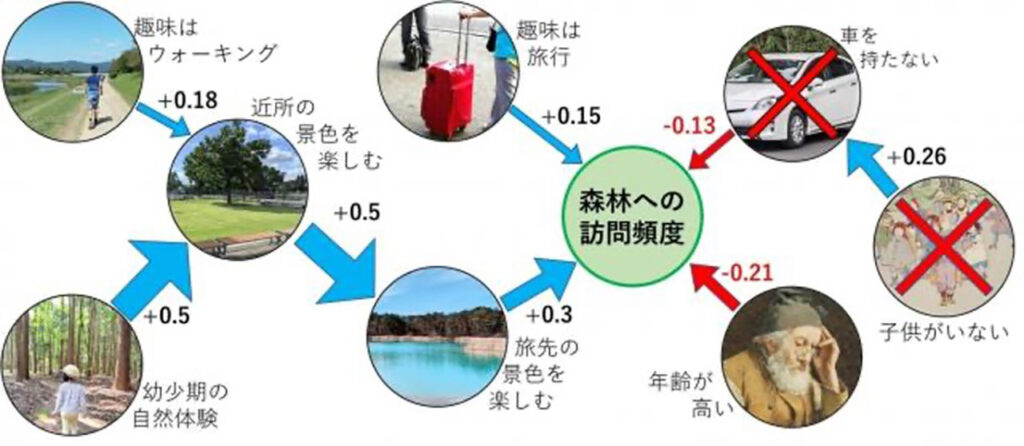Updated by "Forest Circular Economy" Editorial Board on July 30, 2025, 9:34 PM JST
Editorial Board, Forest Circular Economy
Forestcircularity-editor
We aim to realize "Vision 2050: Japan Shines, Forest Circular Economy" promoted by the Platinum Forest Industry Initiative. We will disseminate ideas and initiatives to promote biomass chemistry, realize woody and lumbery communities, and encourage innovation in the forestry industry in order to fully utilize forest resources to decarbonize the economy, strengthen economic security, and create local communities.
How do urban residents interact with forests? The Forestry and Forest Products Research Institute of the Forestry Research and Development Institute (FFPRI) of the National Institute of Forestry Research and Development (NIRD) recently released the results of a large-scale survey on forest use conducted among 5,000 residents of the 23 wards of Tokyo. Although only about one-third of the respondents visited forests in the past year, the survey revealed specific triggers that encourage people to visit forests and issues specific to urban areas.
A multifaceted analysis of the response data revealed that the more frequent forest visitors were, the more likely they were to have had nature contact opportunities, such as daily walks and nature walks on their trips. In particular, the experience of "walking in a scenic area on a trip" stood out as a factor that significantly boosted the frequency of visits. The presence or absence of nature play in childhood and the habit of taking regular walks in the neighborhood were also found to be associated with increased frequency of and interest in visiting. These results suggest that even in urban areas, consciously increasing the amount of time and places where people can come into contact with nature around them will lead to an expansion in the base of forest use.

The survey confirmed a trend of less frequent visits by the elderly and households without cars. While the general trend in national surveys is for natural visitation to increase with age, this urban area survey showed the opposite result. In addition to the low rate of private car ownership, this is due to the structure of the public transportation network, which is difficult to connect directly to forest areas even if the public transportation network is well-developed. Reviewing transportation connections to the suburbs and neighboring municipalities is a prerequisite for increased use.
The results of this study indicate practical conditions for connecting urban dwellers with forests. Measures such as enhancement of local events and nature experience programs, and securing means of transportation such as public transportation and pick-up services, are likely to be key to expanding use. The expansion of efforts to shorten the distance between cities and forests is expected.